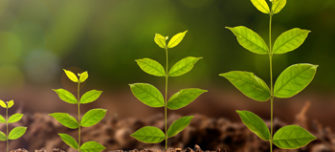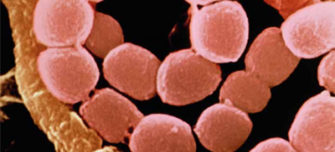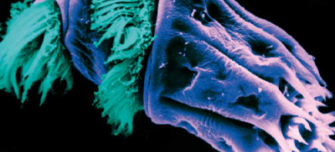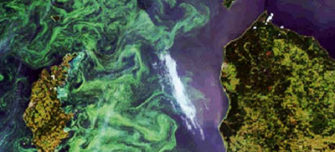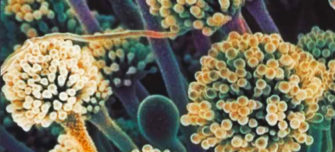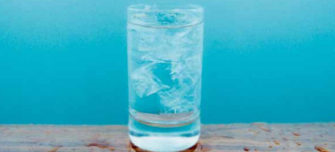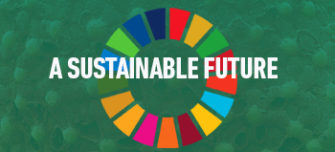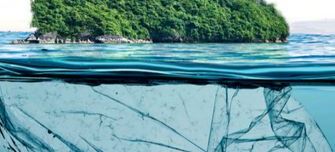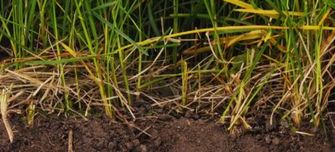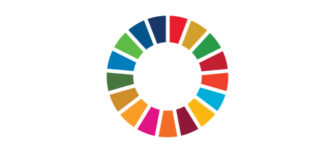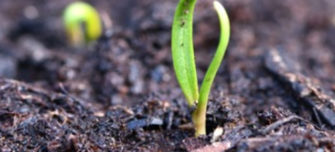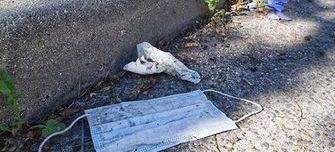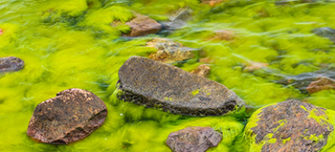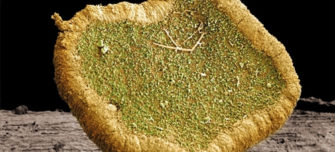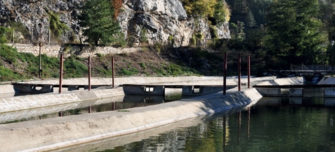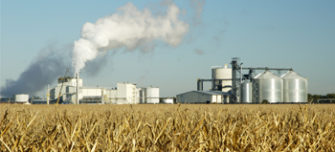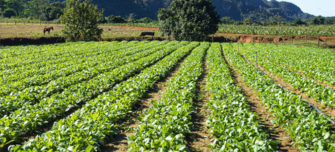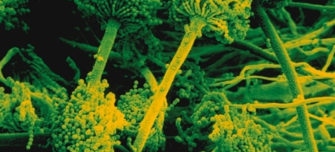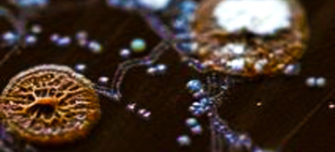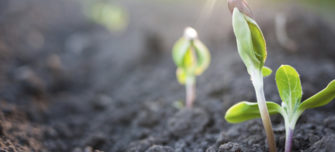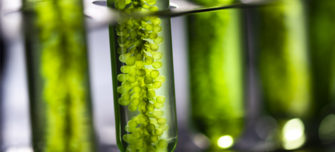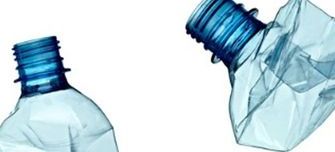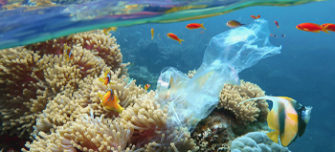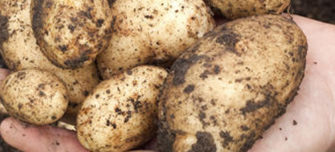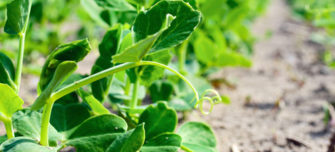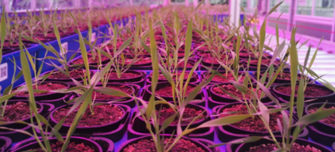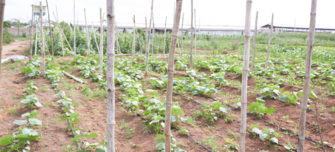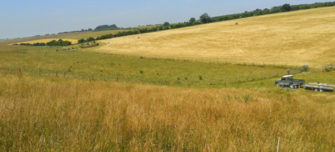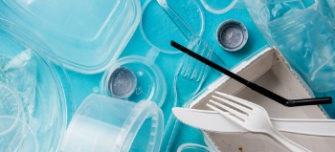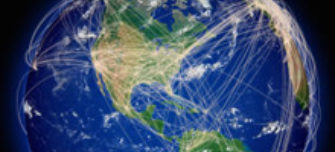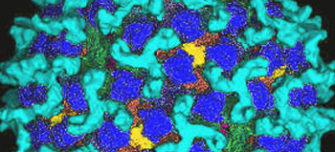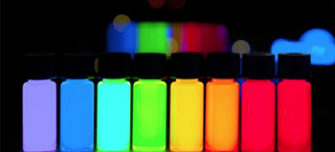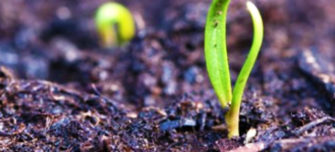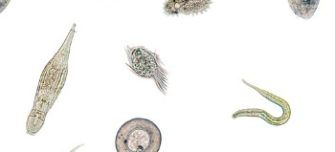Resources and further reading
-
Microbes and climate change
Microbes are involved in many processes, such as the carbon and nitrogen cycles, and are responsible for both the production and consumption of greenhouse gases such as carbon dioxide and methane. Now scientists are trying to include microbial activity in climate change models.
-
Microbes and the outdoors
Microbes play a crucial role in our lives. In fact, we couldn’t live without them but they could live without us. Find out more about microbes and the outdoors, and why key nutrients and elements are crucial to our environment.
-
Microbiology Today: Life on a changing planet
Through each of our featured articles, the authors explore the chronic changes that have been inflicted on Earth's climate and how the microbial world has adapted, been impacted and how microbes could potentially offer solutions.
-
Microbiology Today: Food
As the human population continues to grow, ever greater demands are placed on food production. What contribution can microbiologists make to ensure that the supply of food to all people is secure in this uncertain and changing world? Learn more in this issue of Microbiology Today which focuses on food.
-
Microbiology Today: Soil
Learn more about the microbial world at our feet, the micro-organisms, microbiomes and microbial networks that exist, the ecosystem and processes at play in this issue of Microbiology Today. The issue explores the balance between protecting health and preventing soil degradation, and the microbial clues helping determine time of death in criminal cases.
-
Microbiology Today: Microbes in the air
Discover more about the spontaneous generation debate, microbes and our climate, birds and the spread of disease and the impact of desert dust on microbiology.
-
Microbiology Today: Biofuels
In this issue of Microbiology Today we learn more about biohydrogen, biofuels from algae and the current and future funding landscape for industrial biotechnology and bioenergy research in the UK.
-
Microbiology Today: Microbial evolution
In this issue of Microbiology Today, we explore microbial evolution in action; adaptation of bacterial populations; RNA virus evolution; evolution of anti-fungal resistance in Candida; fast-track bacterial evolution to combat pollution; and serial endosymbiotic theory.
-
Microbiology Today: Water
This issue of Microbiology Today features articles on how microbial life in the ocean affects climate change, the importance of the interaction between viruses and algal blooms for ecosystems, the microbial issues affecting the aquaculture industry and the microbial treatment processes developed for used water.
-
Microbiology Today: Microbes and Food
This issue of Microbiology Today focuses on the use of microbes and the roles they can play in food. We explore how microbes are used to influence flavour production and issues such as food sustainability.
-
Microbiology Today: The Ocean
How do marine microbial ecosystems respond to climate change and pollution? Why could eukaryotic marine parasites have a wide impact on marine ecology? In this issue of Microbiology Today we explore oceans.
-
Microbiology Today: Life's A Gas
In this issue of Microbiology Today we explore microbes and oxygen, the microbial genetics of seaside smells and toxic gases of the nitrogen cycle.
-
Microbiology Today: Can microbes feed the world?
In this issue of Microbiology Today we aimed to bring our readers some fascinating insights and novel perspectives into the influence micro-organisms have on a range of plant–microbe systems.
-
Microbiology Today: Fungal diseases
Fungal diseases can have a devastating effect on our health and our environment. From mycotoxins and mycoviruses to the mechanisms of infection of Chalara fraxinea, Candida and Cryptococcus, we touch on the many ways fungal diseases can affect people, animals and plants in this issue of Microbiology Today.
-
Microbiology Today: Food and water
In this issue of Microbiology Today we explore how the safety of some salad crops can come into question following outbreaks of disease, ways in which we can help harness food and water safety and explore the fruit and vegetables that can make you sick.
-
'A Sustainable Future' project
How can microbiology help achieve the United Nations Sustainable Development Goals (UN SDGs)? Our 'A Sustainable Future' project aimed to actively demonstrate the value and raise the profile of microbiology in achieving the SDGs with decision-makers within the UK and the Republic of Ireland. It also raised the profile of the SDGs within the microbiology community.
-
A Sustainable Future: Project Statement
Bringing together Microbiology Society members and other stakeholders, the ‘A Sustainable Future’ project reflected on the greatest threats facing future generations and focused on unlocking the potential of microbiology to achieve the UN SDGs.
-
'A Sustainable Future' Journal Collection
To highlight the vital role our members play in delivering on the UN Sustainable Development Goals, we have created a collection of must-read articles.
-
A Sustainable Future: Circular Economy Policy Report
Find out more about how microbiology can help to transition our society from a linear to a circular economy, and achieve climate neutrality, in our new report.
-
A Sustainable Future: Soil Health Policy Report
Access our report, which explores new possibilities for the restoration and promotion of healthy soil microbial populations to achieve soil health.
-
Microbiology Society informs House of Commons report on putting nature and net zero at the heart of the economic recovery
The Microbiology Society has issued a response that includes a call for the Government to further invest in microbiological research, particularly in the fields of soil health and the circular economy, to tackle future global challenges. Learn more in this news story.
-
Fifth anniversary of UN Sustainable Development Goals
In celebration of the fifth anniversary of the launch of the UN Sustainable Development Goals (SDGs), we share how the Society has demonstrated the impact of microbiology and how it is contributing to addressing the UN SDGS.
-
Getting involved in Sustainability Research
In this video, Prof. Paul O’Toole (University College Cork) and Dr. Max Paoli (World Academy of Sciences) explain how they got involved in sustainability work and discuss the importance of including sustainability in the academic curriculum.
-
Why is soil microbiology important?
As part of our ‘A Sustainable Future’ policy project, we spoke to Professor Matthew Goddard from the University of Lincoln about his research into the soil microbiome.
-
Does science have a plastic problem? – Microbiologists take steps to reducing plastic waste
“Everyone can make a difference!” urge microbiologists after developing a new approach that could reduce their laboratory’s plastic waste by over 500kg a year. The group, based at the University of Edinburgh’s Roslin Institute, developed an approach to reduce plastic waste produced by their lab.
-
How will the COVID-19 pandemic impact a sustainable future?
COVID-19 has had huge, potentially lasting impacts on all aspects of our daily lives. Yet what long-term effects the pandemic will have not only on our day-to-day living, but also on the environment, is still unclear.
-
Consequences of climate change on microbial life in the ocean
The vast majority of the ocean’s biodiversity is comprised of microbial species. In this article featured in Microbiology Today, we explore microbes and the marine food web, global warming and phytoplankton, and microbes are sentinels of change.
-
Could cyanobacteria be a promising solution for global issues?
Tharangika Bowange tells us more about her research project in Sri Lanka where she studied the commercial potential of cyanobacteria.
-
A plague on our ashes
In late autumn 2012, it became evident that ash dieback disease had become established in native woodlands in the eastern regions of the UK. In this article featured in Microbiology Today, we learn more about this epidemic and its impact on our environment.
-
The highs and lows of ergot
Claviceps purpurea can infect a large number of plant species, including many cereals, to cause a disease called ergot. In this Microbiology Today article, we learn more about ergot, including its impact on human health and the environment.
-
The aquaculture industry
Aquaculture is the rearing of aquatic species under controlled conditions, and in this article featured in Microbiology Today, we explore more about the origin of aquaculture, its impact in the UK and more about the microbiological issues that can surface.
-
Commercialising biobutanol from renewable resources
Most 1-Butanol produced today is synthetic and derived from a petrochemical route. Synthetic butanol production costs are linked to the propylene market and are extremely sensitive to the price of crude oil, as we explore in this article featured in Microbiology Today.
-
Microbiomes and nutrient cycling
It is well understood that the sand, silt and clay content of a soil determines its nutrient cycling and water retaining properties. In this issue of Microbiology Today, we explore the importance of soil microbes and how development impacts agricultural practices.
-
Mycotoxins, food security and climate change: do we know enough?
In this article featured in Microbiology Today, we determine what mycotoxins are, why they are important, and how they impact climate change and food security.
-
Can oil-eating bacteria clean up our seas?
Dr Tatyana Chernikova, Research Officer at Bangor University in Wales, has been investigating the hydrocarbon-degrading properties of some marine bacteria.
-
Fungal bioremediation of a pervasive pollutant
Researchers have been investigating the potential of using certain types of fungus to remove harmful plastic pollution from water and soil.
-
Archaea and the nitrogen cycle
The ability of some archaea to contribute to nitrogen cycling processes has been known for many decades and, in this article in Microbiology Today, we explore how archaea perform nitrogen transformation and have solved several long-established mysteries with regard to nitrogen cycling in the world’s oceans and soils.
-
The current and future funding landscape for industrial biotechnology and bioenergy research in the UK
Industrial biotechnology and bioenergy (IBBE: the use of biological resources in the production of materials, chemicals and energy) is an area of great opportunity for both the UK academic and business communities, as we explore in this article featured in Microbiology Today.
-
Breaking bottles: microbial degradation and remediation of PET plastic
Microplastic pollution is currently at the forefront of public interest in environmental science, with widespread effort to curb plastic usage in order to mitigate environmental catastrophe. In this blog, Jack Henderson discusses the role microbes have to play in solving the plastic pollution problem.
-
Microbiological treatment of used water for the protection of public health and the aquatic environment
Processes for the treatment of used water involve fascinating microbiology, as they show how we control the impact of microbes on us and how we use them to control our impact on the environment, as we explore in this Microbiology Today article.
-
Plastic waste: a global challenge and an opportunity for microbiology
Professor Kevin O’Connor and Dr Tanja Narancic develop technologies which could open up new recycling opportunities and reduce plastic pollution. Find out more about their research in this news story.
-
Using microbiology to bring single use plastics into a circular economy
Biodegradable plastics can be converted into useful end products such as fertiliser, biogas and chemical products by an industrial process called anaerobic digestion. Find out more about how and why this is beneficial to our environment.
-
Enhancing Crop Performance using Soil Microbes
This case study is written by Dr Ewen Mullins, who is Head of the Crop Science department at the Agriculture and Food Development Authority (TEAGASC). It focuses on how (TEAGASC) have identified a novel bacterium, which can modify plant characteristics and provide beneficial traits, such as resistance to diseases.
-
How the Interreg project ReNu2Farm is supporting Soil Health and the Circular Economy
This case study is written by Dr Achim Schmalenberger and Lea Deinert. They are both members of the Microbiology Society. The focus of this case study is on The European Interreg project ReNu2Farm, which is studying the use of recycling derived fertilisers (RDF) to substitute a portion of the current synthetic fertiliser usage.
-
Fixing the Problem of Nitrogen Limitation in Agriculture
This case study is written by Carolin Schulte, who is a Doctoral Student at the University of Oxford, UK, and a member of the Microbiology Society. She explains how her research focuses on how harnessing microbiology to sustainably increase the availability of nitrogen, which, besides phosphorus, is commonly the main limiting factor for plant growth.
-
The role of microbes in plant adaptation to rising soil salinity
This case study is written by Gareth Raynes, who is a PhD Researcher at Aberystwyth University, UK, and a member of the Microbiology Society. It explores how plants microbiomes have more variability than human microbiomes, and different species, habitats, soils and growth conditions impact upon the microbes present on and within a plant.
-
The use of indigenous micro-organisms in the sustainable farming of Amaranthus hybridus
This case study outlines the present study which seeks to improve the yield of Amaranhus hybridus, a vegetable common in Nigeria and other West African countries, through the use of plant growth promoting rhizobacteria (PGPR).
-
U-GRASS: Microbial indicators for soil sustainability
This case study is written by Dr Robert Griffiths, who is a Molecular Microbial Ecologist at the UK Centre for Ecology & Hydrology. It focuses on how, as part of the Natural Environment Research Council (NERC) funded Soil Security Programme, the “U-GRASS” project has questioned how soil microbial communities and the functions they provide are affected by land management.
-
Bioeconomy: Moving Towards a Sustainable Future
In recent years, the bioeconomy has gained increasing prominence as a tool which presents solutions to some of the world’s most pressing challenges. Bioeconomy, the production of renewable biological resources and the conversion of these resources and waste streams into valuable products, holds particular promises for achieving several of the United Nations Sustainable Development Goals (SDGs).
-
Going full circle; creating bioplastics from waste
Researchers have seen the potential for sustainable bioplastic production using wastewater from the dairy industry. Researchers from the NEWTRIENTS project at University College Cork are now studying how to use wastewater from dairy farms to sustainably produce PHA bioplastic.
-
Could microbes hold the answer to rising soil salinity?
As a species we rely heavily on plants, but as climate change continues to have an increased impact and soil salinity continues to increase worldwide, crops will begin to fail. But what if there are bacteria that can help solve this?
-
What is the Nagoya Protocol? How does it relate to microbiology?
In this blog, Katie Beckett from the UK Government’s Department for Business, Energy and Industrial Strategy (BEIS) tells us about the Nagoya Protocol, which aims to ensure that research benefits are shared in an equitable way.
-
Can we use models to predict virus outbreaks?
By 2050 there will be nine billion people in the world, and ever greater numbers will get their dietary protein from animal sources. As a result, we need to increase livestock production and ensure its sustainability. Learn more about how climate change will raise a number of challenges to do this, in this blog.
-
Microbe talk: a sustainable future and a circular economy
Professor Alison Smith Head of the Department of Plant Sciences at the University of Cambridge and Emilia Wojcik, PhD student at the University of Manchester discuss how their research contributes to moving towards a circular economy as part of the United Nations Sustainable Development Goals (UN SDGs).
-
Microbe Talk: Of Microbes and Metals
In this podcast, we spoke to Dr Angela Murray from the University of Birmingham about using microbes to turn waste products into high-end products.
-
Microbe Talk: GlobalseaweedSTAR
In this podcast we spoke to Professor Juliet Brodie, a seaweed researcher working with GlobalSeaweedSTAR, a programme aiming to grow the research and innovation capabilities of developing countries engaged in seaweed farming.
-
Microbe Talk: a sustainable future in soil health
Dr Ellie Harrison, Research Fellow at the University of Sheffield and Luke Hillary, PhD student at Bangor University tell us about how their research into soil health is contributing to achieving the United Nations Sustainable Development Goals (UN SDGs).
-
Microbe Talk: The ecological role of protists
Protists are an extremely important part of many ecosystems, but people don't often consider their significance and the biodiversity they represent. In this episode of the podcast, we speak to Professor Genoveva Esteban whose research focuses on the biodiversity of aquatic systems in the UK.
-
Microbe Talk: The 'first' microbiologist and climate modelling
In this episode of Microbe Talk we speak to Dr Paul Parham about his research on the effect that climate change is having on vector-borne diseases, such as those transmitted by mosquitoes or ticks.
Image credits:
iStock/Anton_Petrus
Opico/iStock
Sophiaworld/iStock
Hemera / Thinkstock
iStock/Nastco
Dr Jeremy Burgess / Science Photo Library
Toshihide Gotoh / Dex lmage / Creatas
Stefan Eberhard / Wellcome Images
iStock/Voren1
David A. Hardy/ Science Photo Library
Steve Gschmeissner / Science Photo Library
Biophoto Associates/Science Photo Library
European Space Agency/Envisat
Photos.com / Jupiter Images
iStock/sborisov
iStockphoto / Thinkstock
Microfield Scientific Ltd/Science Photo Library
Larry Letters / Workbook Stock / Jupiter Images
United Nations
simonapilolla/iStock
undefined undefined/iStock
Crown © Courtesy of FERA/Science Photo Library
Eye of Science/Science Photo Library
Gustoimages/Science Photo Library
photosbyjim/iStock
Diy13/iStock
Manfred Kage/Science Photo Library
mycteria/iStock
Sinhyu/iStock
andreusK/iStock
greenleaf123/iStock
Mick Hoult
iStock/Tunatura
iStock/eagle
Interreg
iStock/undefined undefined
Gareth Raynes
iStock/Onyinye Photography
Robert Griffiths
iStock/Lisovskaya
iStock/Wendy Love
Gareth Raynes
Harvepino/Thinkstock
AJC ajcann.wordpress.com on Flickr under CC BY-NC 2.0
Antipoff on Wikimedia under CC BY-SA 3.0
iStock/andreusK
iStock/frank600
iStock/prill
iStock/the-lightwriter


